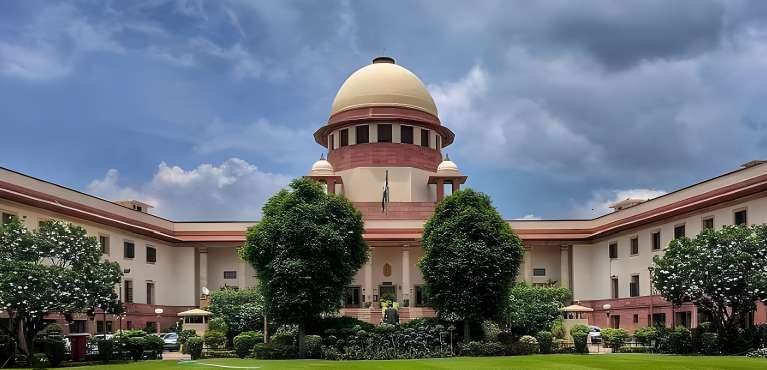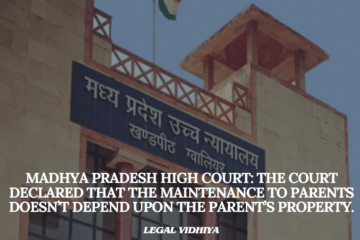
The Supreme Court judges’ library, which commenced operations in 1937 from the humble Princess chamber of the former Parliament House, has achieved remarkable progress and currently stands as the largest legal library in Asia.
The Supreme Court judges’ library, previously located in the modest Princess chamber, has now found its new home in a sleek and modern four-story complex spanning 12,000 square feet. Situated in block A of the Supreme Court’s new additional building complex, the library stands as a state-of-the-art facility. Meanwhile, the main building of the Supreme Court, which continues to house two floors of the library, remains operational to meet immediate demands.
What sets the Supreme Court judges’ library apart from others?
As per statements from Dr. Jyotsna Eveline Reuben, the Chief Librarian, the library stands out as a grid of interconnected libraries that connect the courtrooms, judges’ residences, and the main library building.
In an interview with Bar & Bench, it was revealed that the library primarily caters exclusively to judges and holds the distinction of being the largest legal library in Asia. Functioning as a network of libraries, the current setup comprises 17 operating courts, each equipped with its own internal library housing approximately 2,500 books. Additionally, 34 residential libraries also exist, each storing around 2,500 books.
According to Dr. Reuben, the library acts as a 24×7 resource for judges, offering instant access to research materials. Notably, the library remains connected to the courts through hotlines, ensuring efficient communication. During court sessions, two library members are present in each of the 17 courts to promptly address book requisitions. With an impressive collection of 363 bare acts in each court, the staff is trained to respond immediately to queries. If required resources are not immediately available, the library has a time frame of 2 to 5 minutes to provide a response. Additionally, the library employs interlibrary loans to procure books that may be unavailable in their collection.
The library’s commitment to service extends beyond regular hours, as it remains open during early mornings and late nights when benches are in session or judges require materials.
Notably, the library’s dedication was evident during a significant event when the Supreme Court sat at midnight to hear the final appeal of parliament convict Afzal Guru. Dr. Reuben emphasized that the library was operational at that late hour, providing crucial assistance to the court.
The Supreme Court judges’ library boasts an extensive collection of materials, totaling 378,000 items, encompassing books, journals, monographs, law journals, statutes, committee reports, state legislations, parliamentary debates, and state manuals, among others.
With a subscription to 131 journals, the library offers access to a wide range of legal publications. Out of these, 107 journals are of Indian origin, while 24 are from foreign sources. Additionally, the library subscribes to 19 newspapers and 8 magazines.
One of the library’s distinctive responsibilities includes keeping the Chief Justice of India (CJI) well-informed about legal news reported in the media. This process begins around 4 am daily, where three teams review all e-newspapers, extract relevant legal news, compile them, bind them together, and ensure their placement before the CJI by 6:30 am. The final compilation is sent to the compiler by 6:15 am and subsequently forwarded to the CJI’s office. Furthermore, a physical form of the compilation is dispatched around 10:30 am.
With a dedicated team of 80-85 staff members, including 20 professionals, the library also takes on the crucial task of promptly updating statutes with amendments even before they are incorporated into updated editions. A library official explained, “When bare acts are not published on time, the legislation section ensures acts remain up to date. Whenever an amendment occurs, each one is photocopied and added, along with slips, to the relevant books. This is done in the main library, courtrooms, and residential libraries.”
The library’s commitment to comprehensive and timely information retrieval, as well as its diligent maintenance of up-to-date legal resources, showcases its crucial role in serving the judiciary and facilitating legal research.
Within the library, a notable feature is the inclusion of a special portrait honoring the esteemed jurist and Senior Advocate, the late Soli Sorabjee. In recognition of his contributions, a dedicated section named the Soli Sorabjee Bibliotheca is also housed in the library.
The library received a generous contribution from Sorabjee’s family, who donated 5,000 of his books, further enriching the library’s collection. This gesture serves as a fitting tribute to the legacy and intellectual pursuits of Soli Sorabjee, ensuring that his valuable works continue to be accessible to legal scholars and practitioners.
As a specialized library, the professional staff members possess advanced qualifications, with all of them having completed Masters in library sciences and pursuing their LLM degrees.
The junior staff members hold law degrees, while those in senior positions have earned doctorate degrees.
Dr. Reuben emphasized that the staff members are not just librarians but also professionals and researchers in their own right. They have obtained qualifications that align with the specific requirements set by the judges, ensuring their expertise and ability to meet the high standards expected in their roles.
written by- Sohini Chakraborty intern under legal vidhiya.





0 Comments